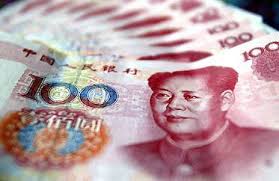SWIFT, a global provider of financial messaging services, has published a report detailing the Chinese renminbi’s (RMB) difficulties in gaining global traction during 2017.
Discover credible partners and premium clients at China’s leading finance event!
The report intends to analyze the scope of the Chinese currency’s position throughout the global financial spectrum. RMB remains quite limited to the Asian region, as its global adaptability remains low despite high trade volumes. Once again, Hong Kong kept the lead as the clear leader in terms of RMB clearing transactions, represented by a 75.68% share of total clearing activity over the course of 2017, up from 74.08% during 2016.
Outside of Greater China, London was the greatest venue for RMB clearing activity, with 5.59% of total clearing volume going through the UK financial center. Despite being at the front of non-Chinese cities, London’s share of RMB clearing declined last year from 2016 levels of 6.51%.
Global Position of the RMB
When compared to the economic overview of currencies, RMB represents a modest 1.61% of December’s domestic and cross-border Payments . The Chinese currency is almost exclusively traded against the US dollar. The CNY/USD pair is responsible for 97.08% of RMB trading, due to incredibly low Liquidity levels against any other global currency. The USD remains by far the most dominant global currency. Its global supremacy is further evidenced by the fact that even payments where the ultimate beneficiary is located in China or Hong Kong are highly dominated by the USD, which represents 80.47% of such transactions.
The RMB's Future Outlook
Over the course of 2017, RMB showed stagnant results, alternating between some positive months, and others that offered less optimism, due to its inability to record growth. In spite of signs that appear to indicate the low impact of RMB in global markets, there seem to be reasons for optimism for the upcoming year and beyond.
Michael Moon, Head of Payments Markets, APAC at SWIFT, addressed the current state of RMB: “The RMB has had a difficult year in 2017 and struggled to realise its potential for growth. Experts suggest that capital controls and uncertainties over future regulations mean that a significant reversal of the decline in RMB usage for trade and payments is unlikely in 2018. However, there are promising programmes being put in place that could lead to growth over the longer term.”
Perhaps the most important factor is the adoption of the SWIFT global payments innovation (gpi) service by Chinese banks. SWIFT gpi aims to increase the speed, transparency and end-to-end tracking of cross-border payments. Its adoption would make China an even more appealing landing spot for global investment opportunities.
According to a survey conducted at Bloomberg’s 2018 FX Outlook summits in Beijing and Shanghai last week, which surveyed banking, treasury and foreign exchange executives in China, the Chinese yuan was deemed the safest choice among major currencies including the US dollar, euro, yen and British pound. The survey showed that of the 500 respondents, more than one-third chose the yuan as the safest bet.
A similar survey conducted in early 2017 saw a response of 60% selecting the US dollar as the best choice for the year. Another conclusion from the survey indicates a general feeling that the yuan is unlikely to become free-floating. Meanwhile, 42% have begun to address training to adhere to the FX Global Code, which was publicly committed to by Bloomberg in December of last year.

















